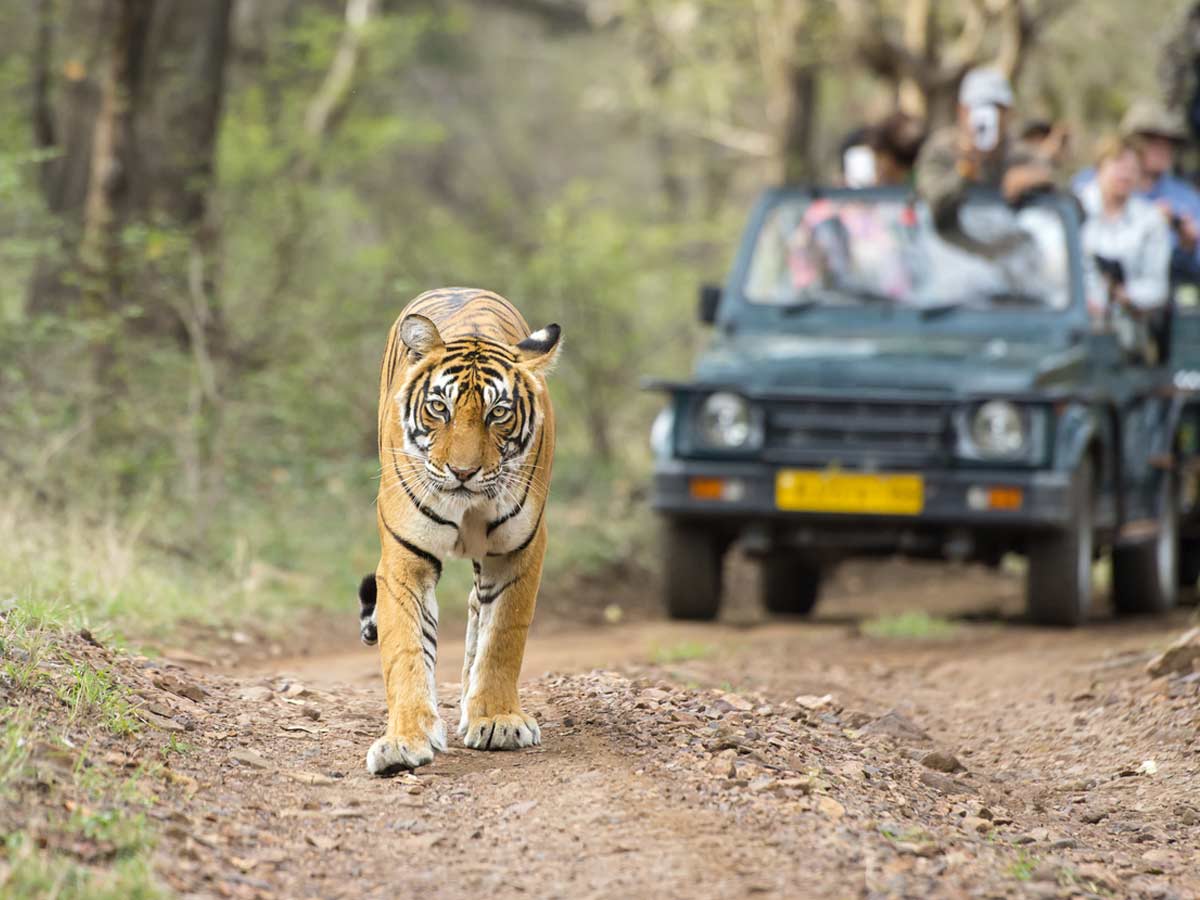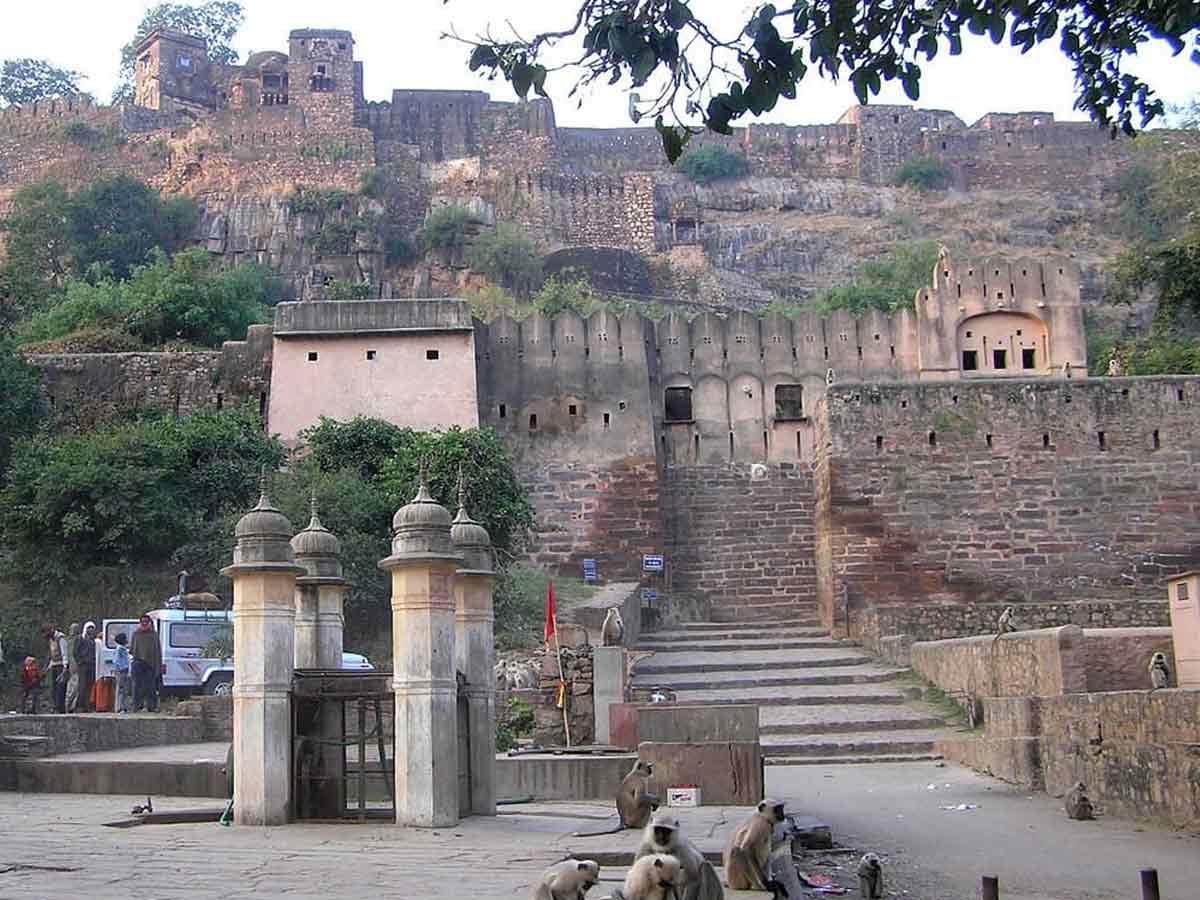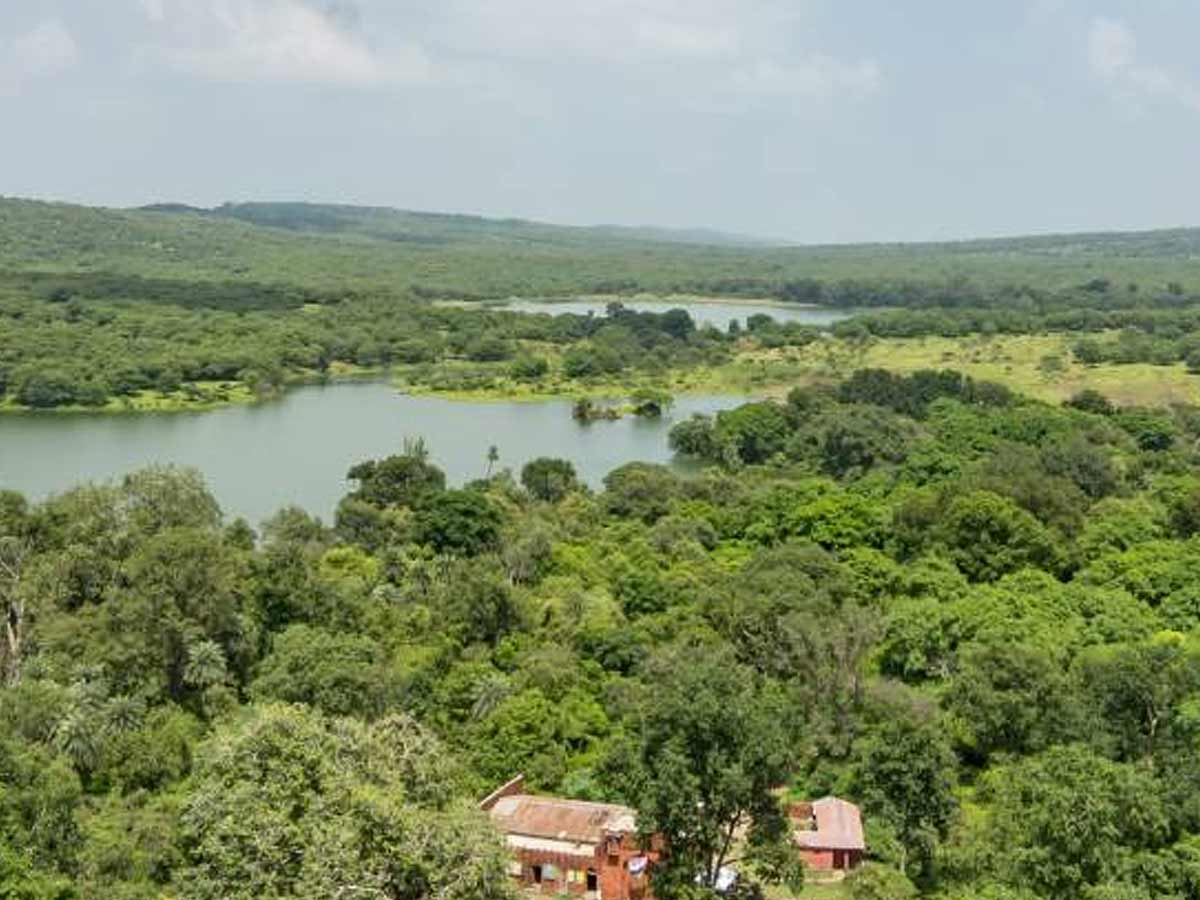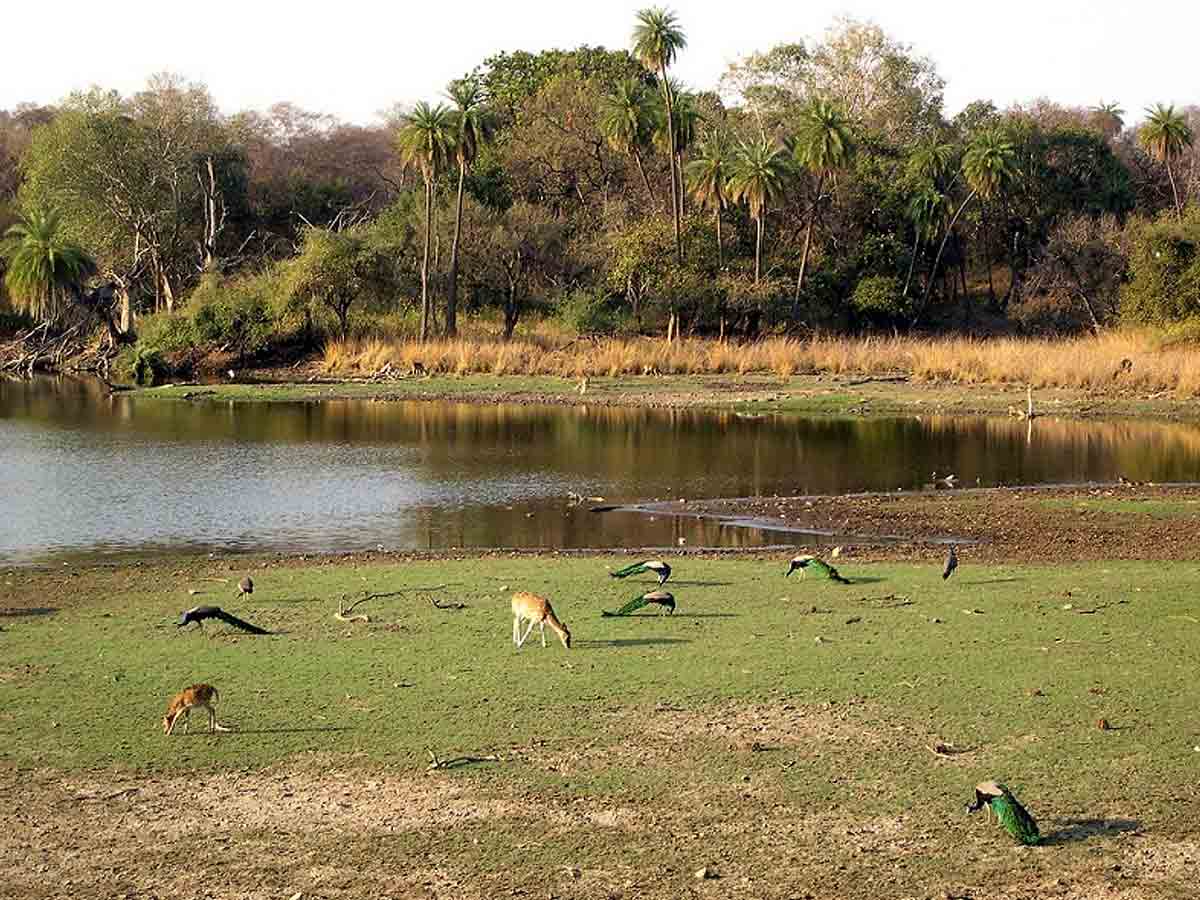Located at a distance of 200 km from Jaipur, Ranthambore is a popular tourist destination that gets its fame from the Ranthambore wildlife sanctuary. Nestled between the Aravali and the Vindhya ranges, Ranthambore was once a hunting ground for the royals. It is a place bustling with natural sites and wild animals. A haven for endangered and protected species, Ranthambore is the closest you get to getting a royal insight into the wildlife. Located amidst dense forests that are inhabited by leopards, tigers, elephants and panthers, Ranthambore is a perfect adventure destination. It is a place where you co-exist with mother nature and its different creations without hindering their movement.
Ways To Reach Ranthambore:
By Air: The nearest airport to Ranthambore is the Sanganer Airport in capital Jaipur. The distance between the airport and the Ranthambore is 147 km. You’ll need to hire a private taxi from there to reach the destination.
By Train: Travelling by train is one of the best and convenient ways to reach Ranthambore. You can reach Sawai Madhopur Railway Station that is located just 14 km away from Ranthambore. Trains from all major parts of the country arrive here.
By Road: You can travel to Ranthambore by road from any part of the country. You can either hire a private cab or come in your personal vehicle. You can also reach Ranthambore by bus.
It is a well-known fact that Rajasthan is one of the hottest parts of the country and it witnesses extreme heat during the summer. That is why the best time to visit Ranthambore is between November and February. Winters are the best time to visit the place. The temperature during the winters is moderate here.
The main reason that people visit Ranthambore is to visit the national park there. However, there are several other spots to visit in the town that excite the visitors specially the history buffs.
Major Places To Visit In Ranthambore
Ranthambore National Park

Ranthambore National Park is one of the most popular national parks in the country. Spread across an area of 1,334 km sq, the national park has Banas River on its north and Chambal River on the south. It was established in 1955. However, it was given the title of a Tiger Reserve much later in 1973 and eventually became a national park in 1980. Wild cats like tigers, leopards and other wild animals like panthers are preserved here. Apart from this, gigantic elephants also call the national park their home. The national park houses several other animals that include hyenas, sambhar, jackals, deer etc. More than 250 bird species also live here. You can see animals like elephants from a very close point. The natural beauty the flourishes inside the national park will leave you mesmerised.
Ranthambore Fort

Ranthambore Fort is another major attraction in the region. The name Ranthambore National Park was given to the sanctuary in the name of the fort itself. Located near the city of Sawai Madhopur, the fort was built in 944 AD. It fell in several hands from Chuhans to Muslim rulers. The fort was declared a World Heritage Site by UNESCO in 2013. The fort is famous for the exceptional carvings, fine ancient architecture and the glorious view of the region that one can get from the top of the fort. The fort was once the refuge of Mughal emperor Akbar.
Kachida Valley

Kachida valley is a picturesque valley located 13 km away from the Ranthambore National Park. It is a heaven for adventure junkies and photography lovers. It is also a popular spot for spotting panthers. Rocky terrains, an immaculate lake and untouched natural beauty are the highlights of this place. A lot of wild animals such as sloth bears and leopards live in the dense forest covers of the valley. It is considered a haven for both wild animals as well as birds. Nature and its creations thrive here in their full might. We, humans, are mere spectators who are gifted enough to experience such spotless beauty. It is a great place for a wildlife safari.
Raj Bagh Talao

Raj Bagh Talao is one of the three lakes that exist within the Ranthambore national park. The reason that it finds a mention in the list is the unmatchable charm that makes it the most beautiful of the three lakes in the national park. Located amidst the dense forest covers, it is a major source of drinking water for wild animals who can be spotted on the corners of the lake. The grass at the corners of the lake is one of the most favourite foods of the sambhar deer who can be seen flocking around it very often. The lake is also known for the ruins present at the edges.



























